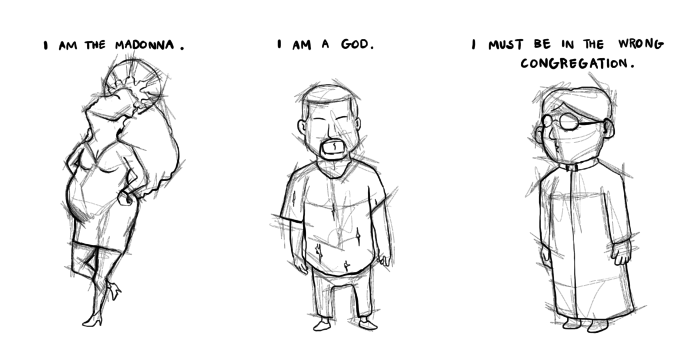Many of us place celebrities and artists on a pedestal — put posters in our room, we constantly check on their social media for updates on their personal lives and we practically break down if we actually get the opportunity to hear them in concert. Celebrities sometimes allow this fame and fortune to get to their heads, and can result in a sort of god complex.
We’ve all heard horror stories of actors and musicians whose fame has caused their ego to inflate to monstrous levels, and yet, however self-involved they become we still worship them. Not only is that unhealthy for a person’s view of themselves, but it can also lead to some serious societal faux pas. When we put celebrities on the same level as divine figures, that celebrity may start to believe it themselves.
The most recent example of this would be Beyonce’s performance at the Grammy’s, in which she wore a headdress and a costume that seemed to be copied from the well-known “Madonna,” which is used as a religious symbol in Catholicism and several other denominations of Christianity.
However, Beyonce is not the first musician to use religious symbols in a secular representation — Kanye West actually has a song on his sixth album (titled Yeezus, which is in and of itself slightly self-idolizing) called “I am a God.” Coupled with the religious imagery he uses in performance, including angels, a Madonna statue and bringing “Jesus” on stage, this performance toes the line of severe religious appropriation. Other religious appropriations include Selena Gomez’s use of the traditional Hindu wedding head decoration in her performances of “Come and Get It” and Lady Gaga’s music video for Judas, in which the male lead wears a gold-encrusted thorn crown, alluding to the crown of thorns Jesus wore before his crucifixion.
There is a crucial distinction that needs to be made when using religious imagery in performance: Using religious imagery to honor the religion or to make a satire of an injustice the artist sees in society is one thing, but to warp the image to either glorify the artists themselves or to change the meaning of the symbol is not only disrespectful, but also sacrilegious. Yes, Beyonce is amazing, but that does not mean that she can present herself in the same light as the Madonna. Whether she, Lady Gaga, Selena Gomez or Kanye truly meant to represent themselves in a sacrilegious light is besides the point — these people all used religion as part of their personal platforms, and in doing so are lessening or warping the religious meaning these symbols have.
Many may not be offended by the use of religious symbols in music, but it is not just offense that we need to worry about. Fans can get out of hand when they truly love an artist, going past the normal appreciation for an artist’s talent and bordering obsession. When a religious symbol is included in an performer’s work, it can become misinterpreted and can lead to further and more fervent worshiping of the artist. For example, a group of misguided (or perhaps ingenious) Kanye West fans have created a “Church of Yeezus” in which they worship Kanye West as a god. Their website is comprehensive and includes their pillars of faith, their dogma and their affirmation of faith, all with Kanye as the deity they worship. While this may be entirely satirical, it is not unheard of for fans to take their love for an artist too far.
Idolatry is an act condemned in the Christian religion, and while it is perfectly normal to have love for a certain artist, we as music appreciators need to be careful of crossing the line from fan to worshiper. In addition, artists and celebrities need to keep in mind that what they see as a prop or an accessory may be a central part of someone’s religion, and they should remember that true fans love them for their music, not the flash or pomp with which they perform.





